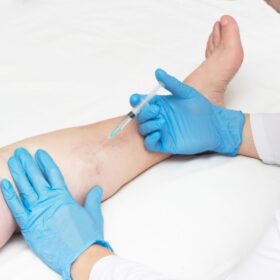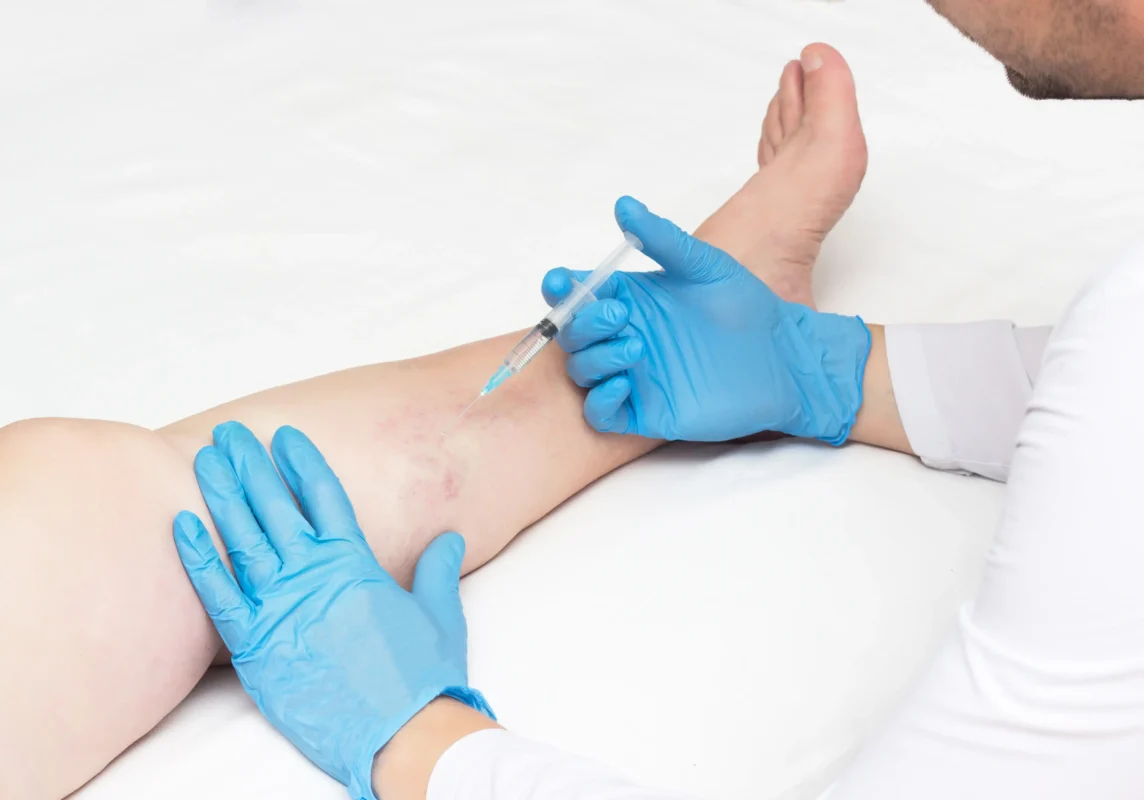Can you have varicose veins removed?
If you have unsightly or painful varicose veins, you may be wondering if you can have them removed. The good news is that, in most cases, varicose veins can be removed safely and effectively with minimally invasive treatments. The first step in determining whether you are a candidate for varicose vein removal is to have a consultation with a board-certified vein doctor at a state-of-the-art vein treatment clinic.
During your consultation, your vein doctor will likely order a doppler ultrasound test to confirm that you have varicose veins, assess the severity of your condition, and determine if your varicose veins are caused by chronic venous insufficiency, the root cause of most vein problems. Once it has been determined that you are a good candidate for varicose vein treatment, your vein physician will develop a customized treatment plan for you.
Vein Treatment Clinic is a group of state-of-the-art medical centers for vein treatment with offices across the United States. If you’re looking for the best clinic for varicose veins, we encourage you to visit the best vein center near your location in New York City, Long Island, New Jersey, California, or Maryland. Our vein center in New York City is located in Midtown Manhattan, a short walk from the Empire State Building.
Please schedule an appointment at your nearest vein center to explore your minimally invasive varicose vein treatment options. Below, we describe some of the best ways to have your varicose veins removed.
Radiofrequency Ablation
Radiofrequency ablation is a minimally-invasive procedure that uses heat to destroy diseased veins. The heat is generated by radiofrequency energy, transmitted to the vein through a special probe inserted via a small incision in the skin. Radiofrequency energy destroys the vein by heating it to a high temperature. The destroyed vein is then absorbed by the body. Radiofrequency ablation is performed on an outpatient basis — you can return to normal activities immediately.
Endovenous Laser Ablation
Endovenous laser ablation is a minimally invasive treatment for varicose veins. The procedure uses a laser to heat the vein, causing it to collapse and close. This results in improved blood flow and reduced symptoms of chronic venous insufficiency and varicose veins. Endovenous laser ablation is performed using local anesthesia so you don’t feel any pain. This is an outpatient procedure and takes about an hour to complete.
VenaSeal
The VenaSeal treatment is a new, minimally invasive approach to treating vein disease. The treatment involves injecting a medical adhesive into the affected veins. This adhesive seals the veins and prevents blood from flowing through them. The diseased veins harden into scar tissues, which are eventually reabsorbed by the body. VenaSeal treats underlying chronic venous insufficiency, the root cause of varicose and spider veins.
ClariVein
ClariVein is a minimally invasive, effective treatment for varicose veins that uses a small catheter to deliver medication directly to the affected vein. In addition to delivering a sclerosing medicine, ClariVein consists of a rotating tip that damages the walls of the diseased vein. The procedure is relatively quick and generally well-tolerated by patients. Recovery is quick, and patients can return to their normal activities immediately.
Ambulatory Phlebectomy
Ambulatory phlebectomy is a minimally-invasive surgical procedure used to remove varicose veins. The procedure is performed under local anesthesia and does not require hospitalization. During the procedure, the surgeon makes several small incisions in the skin over the varicose vein. A special hook is then used to remove the veins through the incisions. The incisions are then closed with small stitches.
Should I get my varicose veins treated?
If you have varicose veins, you may be wondering if you should get them treated. The answer is yes! If you don’t treat your varicose veins, they can get worse over time. They may become larger, more painful, and more likely to bleed. Occasionally, untreated varicose veins can lead to serious problems such as blood clots, ulcers, and skin breakdown. So, if you have varicose veins, please talk to your vein doctor about the best minimally invasive vein treatment options.
What happens before and after radiofrequency ablation for varicose veins?
Before the procedure, your doctor will likely do a physical exam and order a duplex ultrasound to get a better look at your veins. Once it’s determined that RFA is the best treatment option for you, the next step is to schedule the procedure. During RFA, a small needle is inserted into your vein, and a special probe is passed through the needle. The probe emits radiofrequency waves, which heat up and damage the vein walls. This causes the vein to collapse and seal shut.
After RFA, you can expect some bruising and swelling around the treatment area. Your doctor will recommend wearing compression stockings for a week or two to help with these symptoms. You should also avoid strenuous activity for a few days. In most cases, RFA is a successful treatment for varicose veins, and the symptoms should improve within a few weeks. The entire procedure concludes within an hour, following which you may resume your daily activities and work.
What are the signs of a blood clot after vein ablation?
A few signs may indicate a blood clot after a vein ablation. These include: swelling in the leg or arm, pain or tenderness in the area, red or discolored skin, increased warmth in the area, or throbbing or pulsing sensation. If you experience any of these symptoms, please contact your vein doctor immediately.











